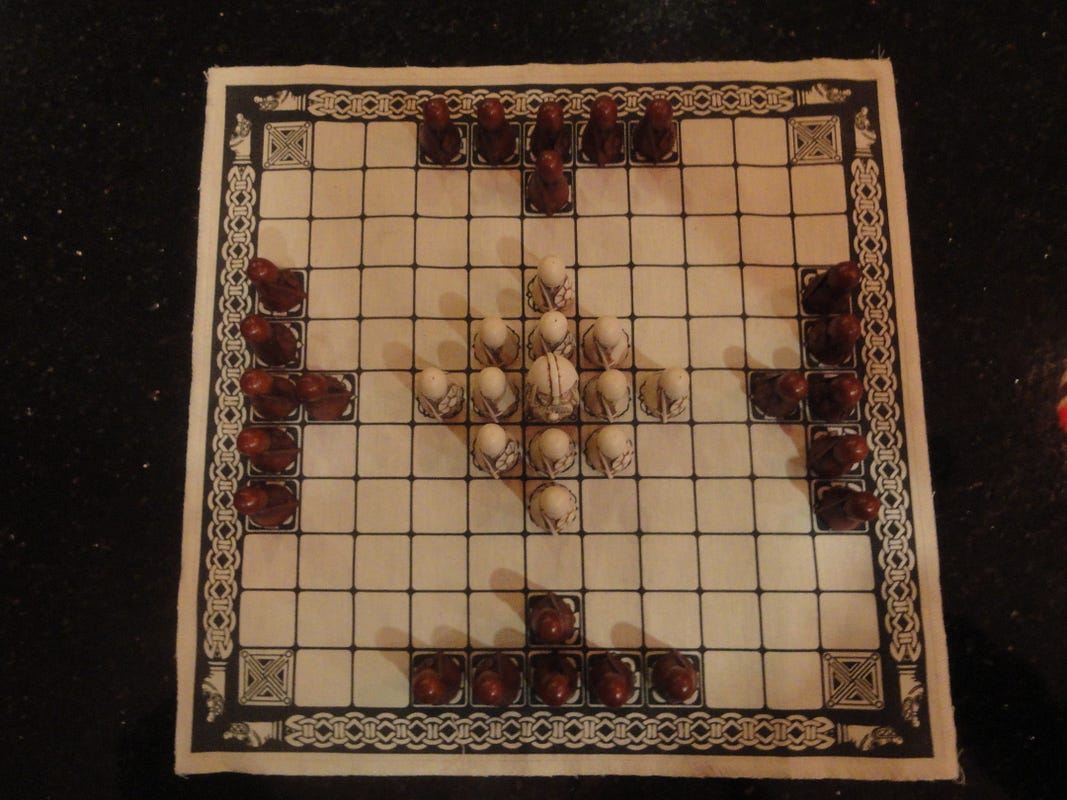
Viking warriors storm into the torch-lit camp of a rival
clan. Outnumbered, the ambushed Norsemen are far from their boats. Their
one goal: flee to a nearby castle while keeping their king alive.
At
first glance, Hnefatafl (prounounced “nef-ah-tah-fel”) might just look
like a knock-off version of chess with Norse helms and impressive
beards, but the game is at least 600 years older—already well-known by
400 A.D.—and is perhaps a lot more relevant to the conflicts of the 21st
century.
“I love the asymmetry in this game. To win
in this game, you absolutely have to think like your opponent,” emails
Kristan Wheaton, a former Army foreign area officer and ex-analyst at
U.S. European Command’s Intelligence Directorate. “Geography, force
structure, force size and objectives are different for the two sides. If
you can’t think like your opponent, you can’t win. I don’t know of a
better analogy for post-Cold War conflict.”
More @ Medium

No comments:
Post a Comment